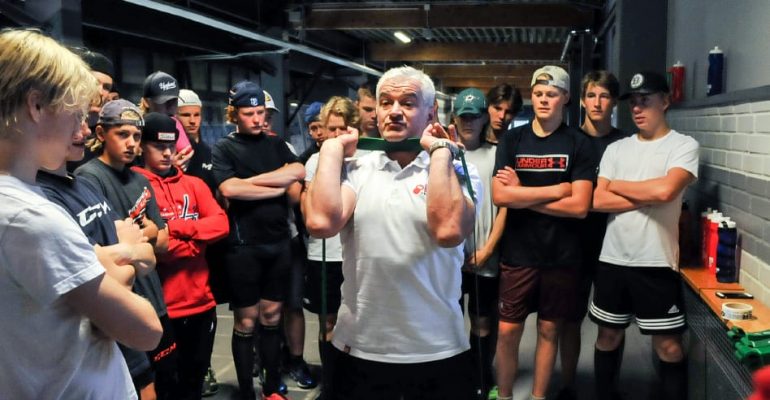Functional training is a process in which physical exercises that form movement patterns (i.e. movements that engage the whole body and imitate sport activity) are used in a deliberate and planned way. Athletic functional training is orientated towards the aim, productivity and results. It is an intended turn from exercises involving only one joint to workout in which whole muscle groups are engaged and which requires integrated, multi-joint moves that occur in kinetic chains.
The methodology of functional training in sports has its source in kinesthetic rehabilitation. Originally, it was used to improve the condition of the ill and injured in accidents. Currently, these rules are also applied to other cases. In their developed form, they make for achieving the best results in sport training and, among other things, helping to prepare professional players. The basic idea of functional training in sports is the practicality rule in execution of exercises or training tasks that directly concerns the everyday life functions, activity and sport rivalry.
According to a popular definition, the term ‘functional training’ relates to “every functional movement pattern covering the actions of slowing down, stabilisation and acceleration that occur within the kinetic chains and in all three body planes. However, this definition narrows the meaning of the term. It says that functional training is a specific type of physical effort that accompanies motion. The definition omits the essence of functional training that concerns the function of movement itself – the creation, regaining or improvement of the movement structure – the qualities that are reflected both in everyday situations, as in sport. Functional training in sport is de facto a program of exercises with a rising level of difficulty, the realization of which notably improves the motor functions of the organism (strength, speed, stamina, agility and suppleness) and causes it to develop specific abilities useful both in everyday life, as in practicing a specific sport. In our case, these abilities are punches and kicks that belong to martial arts.
Functional fitness training can be applied at every level of technical and motor difficulty.
RULES OF FUNCTIONAL TRAINING
- Multi-joint moves occurring in all three body planes (median, frontal, axial).
- Moves that involve multiple muscle groups. These moves make up useful actions that can be applied in everyday life and in sport.
- The element of improvisation and unpredictability due to the rising level of difficulty in exercises.
- Training combined with simultaneous coordination and balance practice.
- Gradual increase in the intensity and difficulty of the exercises.
- Orientation towards developing balance, being able to keep a stable position and increasing the force generated from the lower parts of the body or from a strong torso.
- Emphasis on slow exercises with free weights and with equipment that requires stabilisation muscle work. Usage of own body weight. Introduction of exercises that require the muscles and joints to fight gravity force, which, at the same time, also helps improve the balance.In conclusion:
- slower tempo of exercises,
- introduction of free weights or equipment that requires stabilisation muscle work,
- usage of own body weight in strength training, exercises devised to fight with gravity and to support balance training.
The slow tempo of exercises is the introductory stage of the training that allows stable and concentric muscle work. This phase of strength training notably improves the work of proprioceptors and also protects athletes from injuries. In next stages of the training, most sports require dynamic physical activity.
- Orientation towards achieving a determined goal. Every move has its practical application and leads to a specific result, therefore, it should executed with precision.
- Concentration on the work of the whole body, occurring in kinetic chains in form of integrated actions. Evasion of movements that isolate muscle work from joint work.
- Intentional introduction of exercises performed in unstable environment. These exercises are more difficult, as they require constant keeping of one’s balance. Their execution allows athletes to develop the ability of keeping or regaining their balance, as well as to improve muscle coordination.
Text source:
“TRAINING OF EXPLOSIVE POWER IN MARTIAL ARTS” book from PIOTR SZELIGOWSKI
translation: ADAM SZELIGOWSKI


Leave a reply